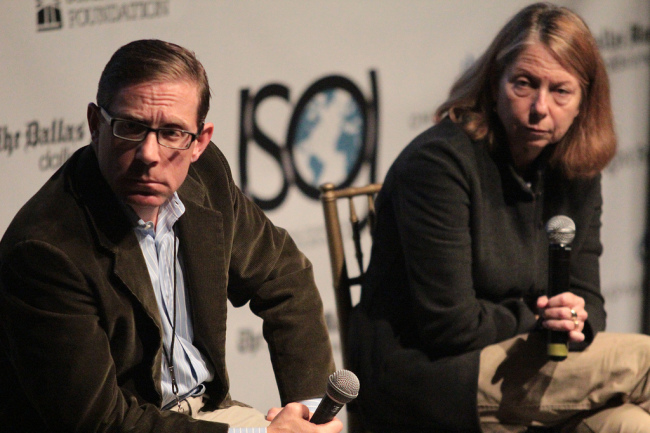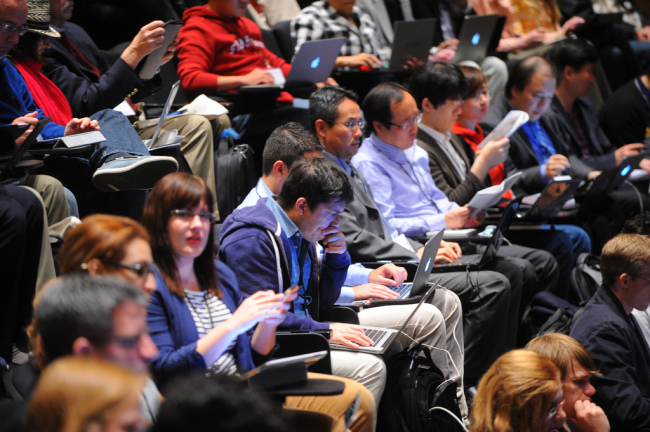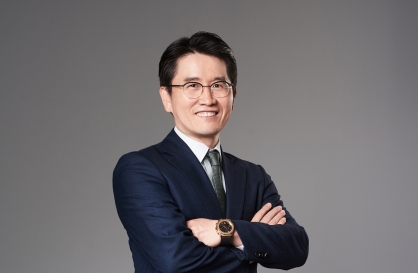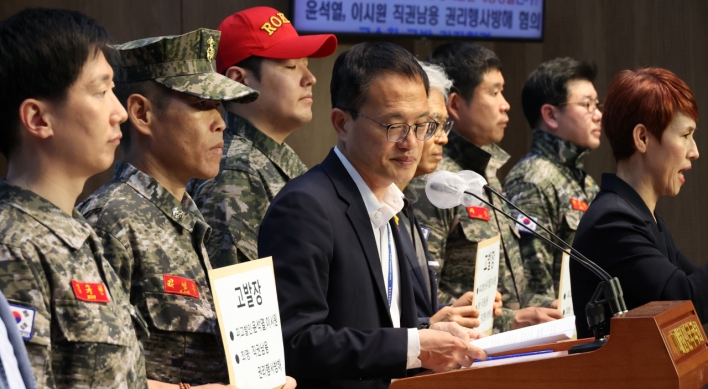Online journalism forum explores digital disruption
NYT executive editor stresses the potential of multimedia package as part of a new organic storytelling
By Korea HeraldPublished : April 21, 2013 - 20:49
AUSTIN, Texas ― The 14th International Symposium on Online Journalism wrapped up its two-day run on Saturday, exploring key issues for media companies such as responses to digital disruption, and the impacts of social media and data visualization.
About 350 journalists, media executives and scholars from around the world gathered at the campus of University of Texas, Austin, to share their views on the drastic changes sweeping the media industry and the unprecedented challenges sparked by the digital revolution.
The conference featured a host of high-profile keynote speakers: Jill Abramson, executive editor at The New York Times; Emily Bell, director of the Tow Center for Digital Journalism at Columbia University and former director of digital content for The Guardian; Andy Carvin, senior strategist for social media at NPR; and Clark Gilbert, president and CEO of the Deseret News Publishing Company and former professor at Harvard Business School.
About 350 journalists, media executives and scholars from around the world gathered at the campus of University of Texas, Austin, to share their views on the drastic changes sweeping the media industry and the unprecedented challenges sparked by the digital revolution.
The conference featured a host of high-profile keynote speakers: Jill Abramson, executive editor at The New York Times; Emily Bell, director of the Tow Center for Digital Journalism at Columbia University and former director of digital content for The Guardian; Andy Carvin, senior strategist for social media at NPR; and Clark Gilbert, president and CEO of the Deseret News Publishing Company and former professor at Harvard Business School.

Gilbert kicked off the symposium by introducing an intriguing concept about how one disruption takes shape and reconfigures an entire industry.
“Disruption starts outside of core business,” he said, explaining that digital disruption also originates beyond the current core business area, which often gets ignored by established media.
“Still people think digital business just an add-on, which it’s not,” said Gilbert, showing how the late-coming disruption business eventually takes over the existing one.
As minicomputers disrupted the business foundation of mainframe computers decades earlier, online media is rapidly growing in a way that poses a make-or-break threat to print media, Gilbert said.
What newspapers can do to overcome the threat is to set up a separate entity made up of reporters with disruptive digital DNA while repositioning its core business around a post-disruption model, Gilbert suggested.
Media companies, meanwhile, are getting swept by the mobile and social media revolutions that put priority on speed over accuracy. To tackle this grave issue resulting from the shift of focus in media, Andy Carvin, in charge of social media at U.S. radio organization NPR, said in a moving keynote speech that people in and outside the media circles should exercise caution to minimize the circulation of groundless rumors.
His argument came at a time when a flurry of inaccurate reports and speculative comments hit the U.S. media landscape in connection with the tragic bombing of the Boston Marathon that shook the country.
Focus on accuracy is especially needed for stories that go through almost endless layers of mobile and social networks, he said.
“We no longer control the flow of information and the public is having its own conversation,” Carvin said, calling on journalists to use social media to “slow” the news cycle.
“We need to stop putting ‘breaking’ and ‘confirmed’ in front of all of our tweets, because it’s pointless. It doesn’t help,” he said.
Carvin said he does not see much value in a flood of tweets online, declaring that “99.9999 percent of Twitter traffic is noise” and it’s a journalist’s job to uncover the value out of 0.0001 percent of tweets.
Despite the explosive growth of mobile and social news, Jill Abramson, the NYT’s executive editor, also stressed the traditional role of the media in pursuing accuracy.
Abramson, who flew from New York to Austin Saturday afternoon after directing the coverage of the Boston bombing, said she worries about the number of inaccuracies in breaking news stories.
“Lately, we have crossed a Rubicon of inaccuracy,” she said.
She said the NYT is focused on doing long-form, probing, narrative journalism that brings readers the story behind the story. “I always want our reporters to look for what really happened, and they have to search for authoritative sources,” she added.
Though her priority is placed on traditional virtues of newspapers, Abramson is not opposed to adopting new technologies. In fact, she said she’s excited about multimedia-heavy storytelling since it creates what she calls “a new way of reading.”
A striking example of excellent data visualization is the NYT’s Pulitzer Prize-winning story “Snow Fall,” a multimedia package on a deadly avalanche in Washington state that pieces together text, photos, videos and related information.
“‘Snow Fall’ has actually become a verb,” Abramson said. “To snowfall means to tell a story with fantastic graphics and video and every kind of multimedia, and that is absolutely organic to the storytelling itself.”
ISOJ is an annual conference organized by the Knight Center for Journalism at the School of Journalism of the University of Texas at Austin. Professor Rosental Calmon Alves is the founder and director of ISOJ.
By Yang Sung-jin, Korea Herald correspondent
(insight@heraldcorp.com)

-
Articles by Korea Herald







![[Weekender] How DDP emerged as an icon of Seoul](http://res.heraldm.com/phpwas/restmb_idxmake.php?idx=644&simg=/content/image/2024/04/25/20240425050915_0.jpg&u=)

![[Herald Interview] Guggenheim Museum makes a push for technology-based art with LG](http://res.heraldm.com/phpwas/restmb_idxmake.php?idx=644&simg=/content/image/2024/04/26/20240426050608_0.jpg&u=20240428114717)









![[Herald Interview] Mistakes turn into blessings in street performance, director says](http://res.heraldm.com/phpwas/restmb_idxmake.php?idx=652&simg=/content/image/2024/04/28/20240428050150_0.jpg&u=20240428174656)
